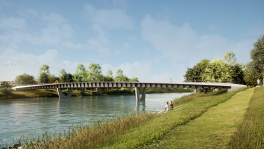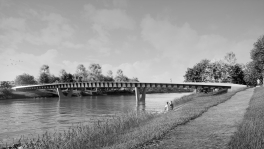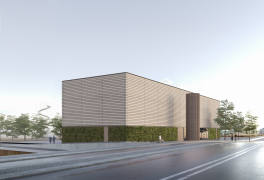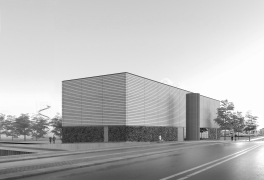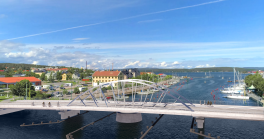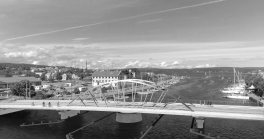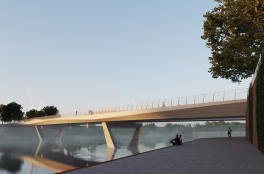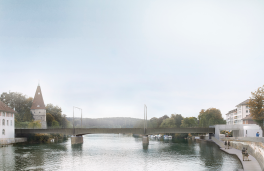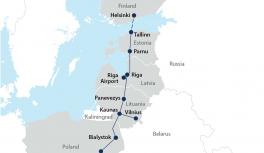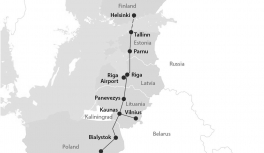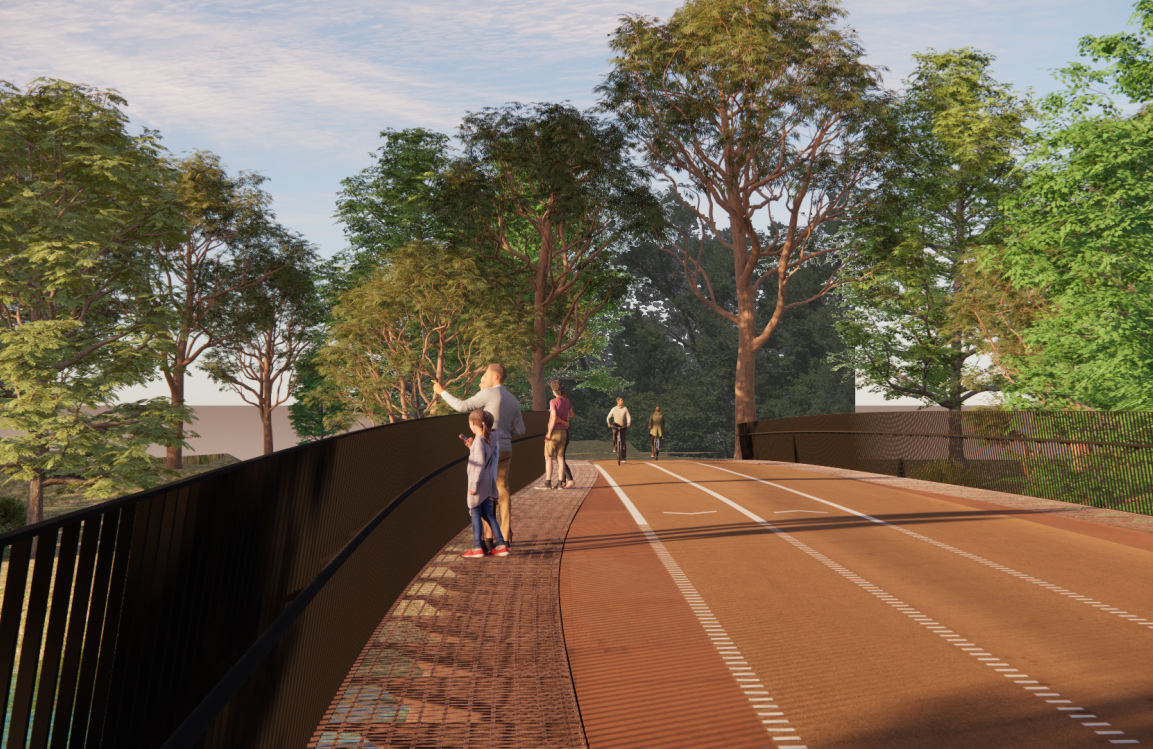
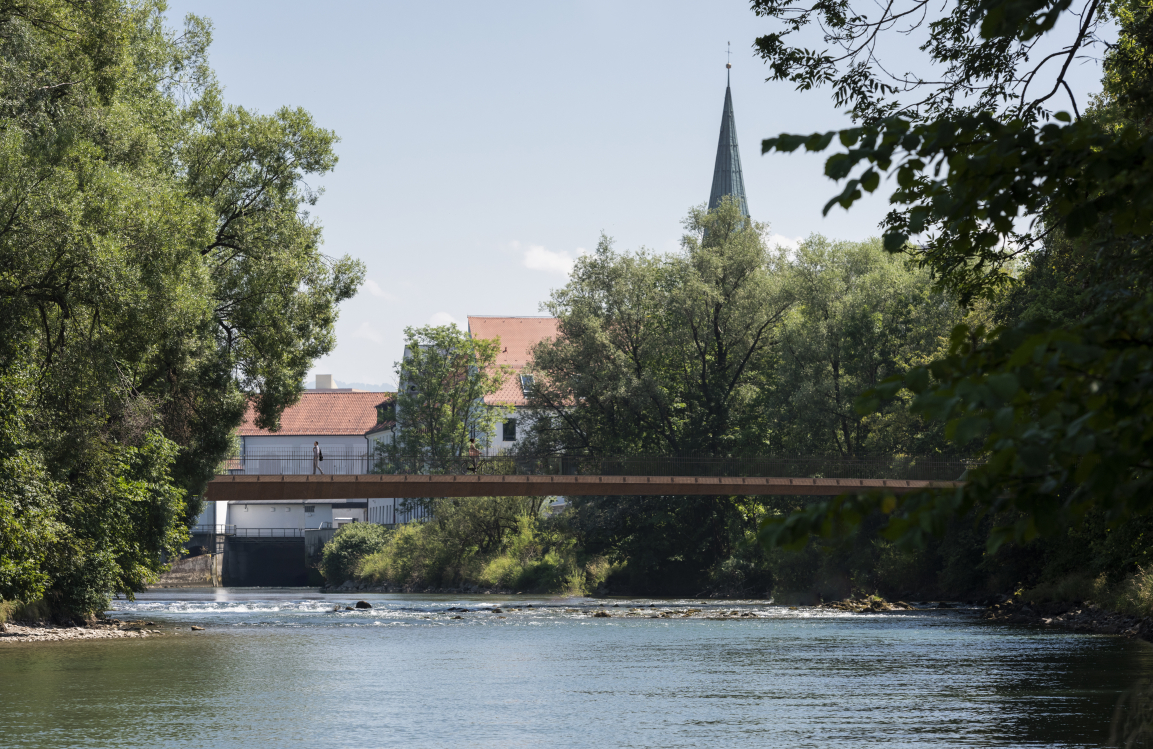
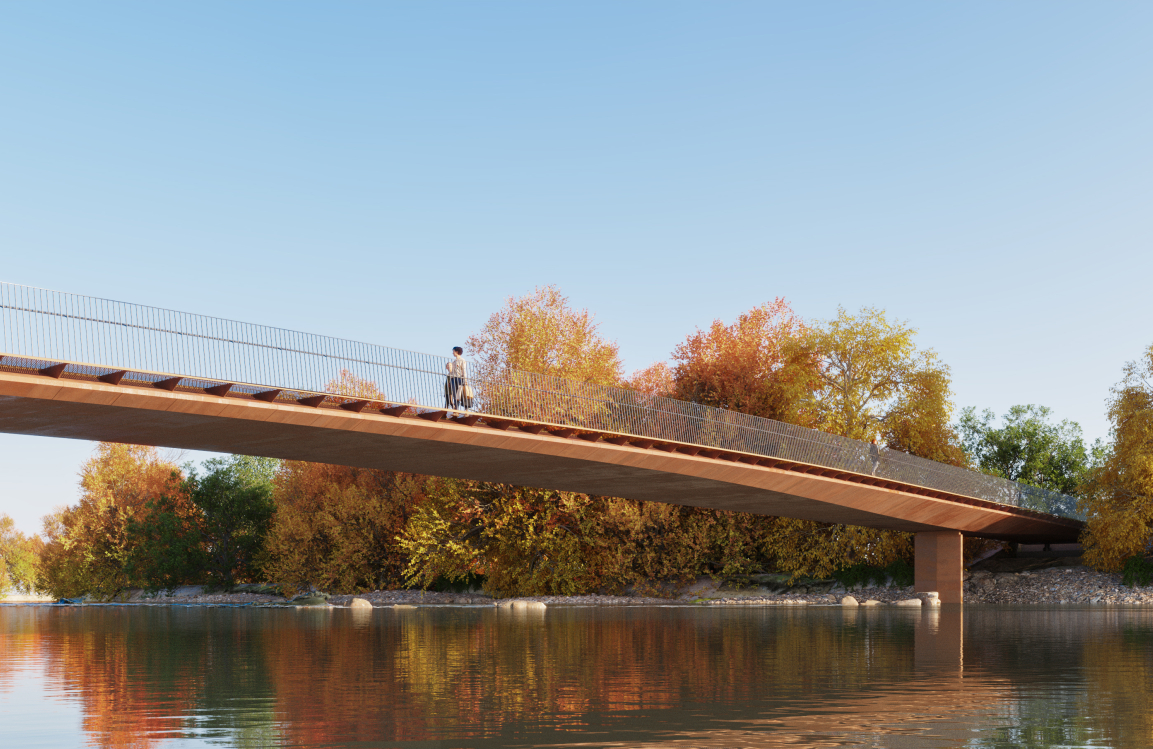
New bridge across the Iller River in Kempten, Germany
Gottlieb Paludan Architects has developed a proposal for a new pedestrian and bicycle bridge across the Iller River in Kempten, Germany, which forms an important transport link between the eastern districts and the city center and plays an important role in urban development.
The existing bridge, Illersteg, over the Iller River in Kempten is to be replaced with a new structure in the same position to create better conditions for bicycle and pedestrian traffic in this central part of the city. The Illesteg Bridge connects the city in an east-west axis, and especially in this area of the Iller River, both sides are lined with old trees. The bridge is also central during the warm season, when the "illersurfers" use the structure as an anchor point. The beach areas and the bridge are "grandstands" for spectators and passers-by during these events and therefore the design of the underside of the bridge is just as important as the top of the bridge.
The bridge is designed with resource efficiency in mind, minimizing the amount of materials used while achieving a span of 73.2 meters over the Iller River with two spans. Consideration of the existing structure and integration into the surroundings has had a major influence on the design proposal. The bridge is deliberately slim in order to blend in with its surroundings as much as possible. Seen along the river, the bridge appears as a horizontal plane floating above the water between two green banks. This is achieved by placing the bridge's abutments far back on the banks and thus covered by the trees, and by reducing the number of support points to a single column. This maximizes the space for the river under the bridge.
The bridge superstructure is designed in CorTen steel construction, which is an airtight welded box girder characterized by a shape that adapts to the course of forces. The choice of CorTen steel as a material harmonizes with the local colour spectrum, ranging from the trunks of the trees along the river to the city's tile-covered gabled roofs. The widening of the bridge's cross-section invites people to linger and enjoy the view, and also creates an escape space that provides safety in the event of events at the stadium and the associated increased traffic volume on the bridge.
Although, according to the German average, 191 t CO2-eq. are emitted in the production of the required steel, the planning should investigate whether scrap steel could be used instead of primary steel, which would save 70% of these emissions. By using the maximum possible content of blast furnace slag (88%) in the cement used for the pillars and support (CEMIII/B), a total of 13,160 kg CO2-eq. can be saved. This is an amount of CO2 that would otherwise have to be absorbed by 1,050 trees over the course of a year.

